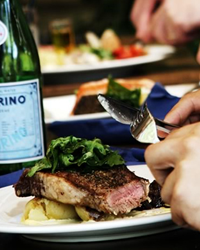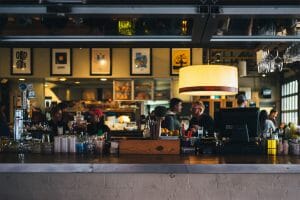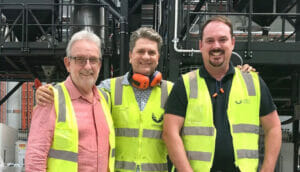 It’s regrettable that food and catering is an area that creates a disproportionate amount of problems in many clubs, given that it rarely contributes to the profit line and in some cases causes considerable loss to the point where Club management becomes so frustrated that they give it away to contractors who can make money out of it. There are many reasons for this and some of the more obvious ones I will discuss in this article.
It’s regrettable that food and catering is an area that creates a disproportionate amount of problems in many clubs, given that it rarely contributes to the profit line and in some cases causes considerable loss to the point where Club management becomes so frustrated that they give it away to contractors who can make money out of it. There are many reasons for this and some of the more obvious ones I will discuss in this article.
I thought it would be appropriate to start at the beginning and discuss why we should have a food operation and what factors influence its style and process. Before deciding what type of food outlet you should operate, many factors have to be considered. First we have to decide what sort of people are going to use our food facilities or alternatively, what sort of people we want to attract. Having resolved that you’ll probably find it is not possible to establish one food outlet that satisfies all your members’ requirements. With the diverse demographics that clubs now have, food service from at least two or three different food outlets are almost essential.
We also have to analyse the reason for providing a food outlet. Why are we providing it? As it is so often the case, food of some description is expected to be available. Alternatively, are we trying to provide for a need that we know exists within our members, are we trying to provide a facility that will hopefully attract new members to our club or are we trying to cater to a different demographic group so we have a better chance of making it a profit centre? This is an important mental attitude that must be resolved when approaching the development of food outlets. It is obvious the prime motivation should be – in the present climate anyway – to attract new people to our club and keep the ones we have at break even or perhaps make a profit from them in the process. It follows that we shouldn’t consider it an inconvenience because people expect it to be there.
Knowing why we’re providing a facility, as well as having an idea of the type of people who are going to use it, immediately starts to give us some clues as to what our food operation should be like. A food operation should not be located somewhere because it’s an easy place to put it or it happens to be a dead spot in the club. The décor should be sufficient to make it stand out and not necessarily blend in with the club surroundings. Remember, we’re trying to make this a significantly attractive area of the club and therefore it should look significant in its theme; the colours used, the furniture, and above all the range of products and level of service it provides.
Many food operations particularly in clubs, tend to look like the kitchen galley in a hospital; they’re cold, clinical, and factory-like. They overlook the fact that many people relate food to a friendly warm environment or a place that provides visual as well as food “entertainment”. Providing these sorts of features will make the food operation a destination in its own right for reasons other than cheap price. Regrettably, some builders tend to steer away from exciting themes in favour of white tiles, drab colours, chrome and stainless steel. Many such operations look like what they are; glorified factory cafeterias, not the sort of places that people would be attracted to.
The food areas should not be too large in size also. If you have a large number of people to cater for, then you should have a variety of more intimate dining areas each with the different feel, perhaps some in different areas of the club, rather than one big, plastic environment because it’s easier to do it that way. You must be unique, different and original. Peter Constance’s new food area at City Golf Club in Toowoomba is an example of a diverse food outlet which offers a Wok Bar, Pasta Bar and a large Cafe in addition to a conventional Bistro.
In the next issue I will write about some more successful food operations in the Queensland club environment that managers and committee/board members should check out.
Contact John Dickson




